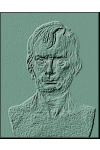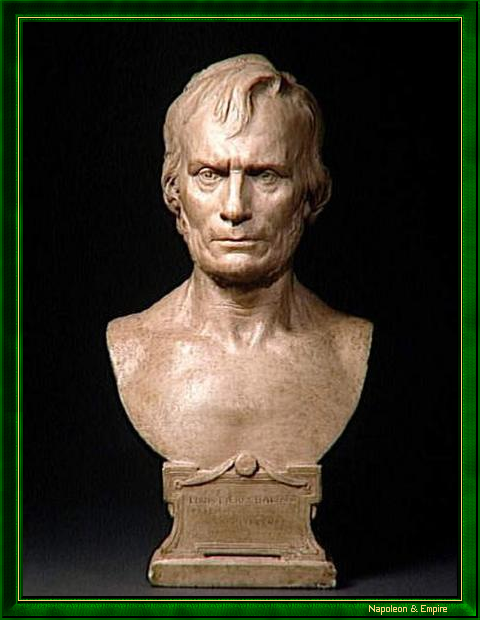Louis-Pierre Baltard
Pronunciation:

Louis-Pierre Baltard was born in Paris on July 9, 1764. He studied first at the Free School of Industrial Arts and then at the Louvre School of Architecture. A student of Antoine-François Peyre, known as "Peyre the Younger," he was summoned to Versailles by Richard Mique, the director of the Royal Academy, and worked at the Trianon.
In 1788, a scholarship enabled him to travel to Italy, where he assiduously studied ancient monuments. Upon his return, he exhibited his works at the Salon of 1791, which had just opened an architecture section. He participated regularly until 1835.
His skills as a draftsman, which had earned him the position of set designer for the Opera in civilian life, qualified him, when war broke out, as a military engineer. From 1793 onward, he drew up plans for fortifications.
Although appointed professor of architecture at the Polytechnic school in 1796, his artistic activity during the Consulate and the Empire revolved primarily around engraving. He then published collections on Italy (Voyage d'Italie) and Egypt (Expédition d'Égypte) and, in 1803, on Paris and its monuments. This did not prevent him from exhibiting again at the Salons of 1810, 1812, and 1814, this time in the painting section. As an architect, he was disappointed to see his project to connect the Louvre to the Tuileries Palace, presented to the Emperor, come to nothing.
In 1818, the École des Beaux-Arts entrusted him with a professorship, which he held until his death. This teaching activity nourished his writing and allowed him to become one of the leading architectural theorists of his time. Among his works are L'Architectonographie des prisons (1829) and his Introduction au cours de théorie d'architecture (1839).
His appointments as architect of the Pantheon, the prisons and the markets of Paris (1815-1818), to the council of civil buildings (1831) and to the inspection of works of Paris (1837) also made him one of the best specialists in prison and building architecture.
It was in Lyon, at the end of the Restoration and under the July Monarchy, that Louis-Pierre Baltard created his most successful works: the salt storehouse (1828), the Perrache prison (1830), the artillery arsenal (1840-1846), and the Palace of Justice (1835-1847), a grand classical-style building with a magnificent Corinthian colonnade, which stands on the banks of the Saône. This monument is characteristic of late Neoclassicism.
Louis-Pierre Baltard died in Lyon on January 22, 1846, in a horse-drawn carriage accident. He is buried in Paris, in the Montparnasse Cemetery, 18th division .
"Louis-Pierre Baltard". Bust by Eugène Guillaume (1822-1905)

It is to his son, Victor Baltard (1805-1874), that we owe the famous Les Halles market in Paris.